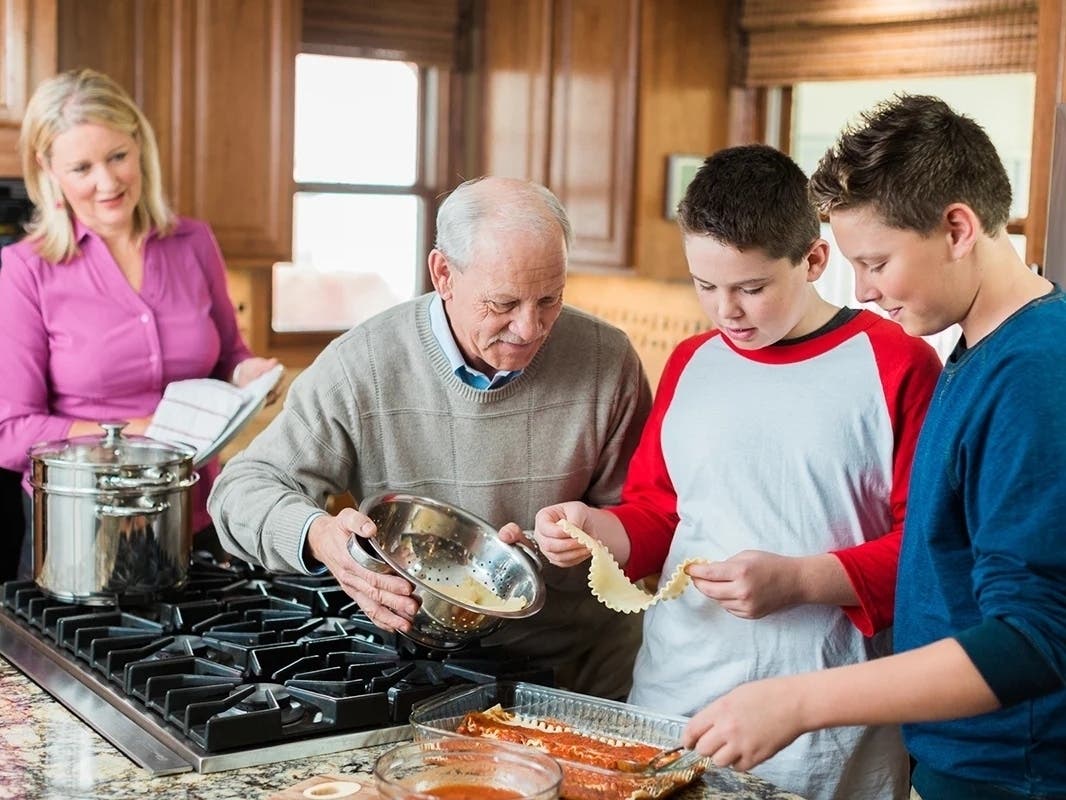
This is a paid post contributed by a Patch Community Partner. The views expressed in this post are the author's own, and the information presented has not been verified by Patch.
It seems as though a new diet debuts every year or so, complete with menus and tips that promise a swift path to a healthier life. But for lonely older adults, few food plans focus on the one ingredient most miss: companionship.
A companion who is involved in the meal process may minimize these risks for loneliness that can lead to poor nutrition, noted Home Instead, Inc., Gerontologist and Caregiver Advocate Dr. Lakelyn Hogan. Call it the companionship diet. A companionship diet plan is more than a health trend, Hogan explained. It’s a mind shift that offers an older adult a partner to help him or her navigate the entire dining experience, from meal planning to actually enjoying a meal together.
Find out what's happening in Melrosewith free, real-time updates from Patch.
- Companionship has never been more relevant for today’s seniors. Quarantine and self-isolation orders left thousands of older adults at home alone during COVID-19. According to research, isolation can contribute to loneliness and nutritional risk.
- U.S. seniors who eat most of their meals alone are more than twice as likely to be lonely (42 percent) than seniors who eat most of their meals with others (19 percent), according to research conducted by Home Instead, Inc., franchisor of the Home Instead network.
- Even before the coronavirus pandemic forced the increased isolation of so many, 75 percent of lonely seniors in the U.S. (69 percent in Canada) already were not getting the right amount of at least one element of nutrition.
A companionship diet is more than just eating together, it’s creating an experience an aging loved one and his or her family caregiver will both enjoy.
Following are six ways to help make an older adult part of family meals, according to Registered Dietitian Nutritionist Shannon Muhs and Home Instead, Inc., Gerontologist and Caregiver Advocate Dr. Lakelyn Hogan
Find out what's happening in Melrosewith free, real-time updates from Patch.
- Involve your loved one in the preparation process ~ If your loved one is up to it, ask him or her to arrive early. Perhaps your older adult can still peel potatoes or frost the cake. If nothing else, suggest he or she sit and chat while you’re cooking, or give advice from the sidelines.
- Create a relaxed and positive atmosphere ~ Emphasize lighting, happy music and low stress. “Good vibes will help everyone involved want to repeat the experience,” Muhs said. “I think that’s key.”
- Plan simple meals ~ Check in with older adults before dinner and ask them to select a favorite recipe that you could make. Don’t make mealtimes too hard, especially if seniors have disabilities and dementia. “I think of finger foods, bite-size pieces, familiar comfort food,” Muhs said. “If chicken nuggets are the only chicken a loved one will eat, that’s appropriate. Combine with green beans and a starchy vegetable like potato chunks or a whole grain like whole wheat toast strips.”
- Connect any way possible ~ “Any time a family is around the same table engaging in conversation would be the most meaningful and rich experience,” Hogan said. That’s not always possible. “Even calling up a loved one at mealtime, putting the speaker phone on and chatting together are good options. Or try to make the same meal, such as spaghetti, and compare recipes and engage virtually or over the phone. FaceTime calls or Zoom meetings, or use of the Home Instead tablet during mealtimes could help an older adult feel less isolated.
- Set aside time for your older loved one to share a story ~ Engage in meaningful conversations. “Ask loved ones about the foods they grew up loving or how supermarkets have changed over time,” Hogan said. “Reminisce and get to know the older adults and ask them about their past. Mealtime is a great time to reminisce. Make it an intergenerational experience. Pass down those family stories. A lot of that happens over meals shared at the dinner table. Those are ways seniors can feel more connected at mealtime. . . It helps the family gain a better appreciation for the rich life their loved one lived.”
- Make dinner a regular occurrence, no matter what ~ Make a commitment that can be counted on, even if it’s take-out or virtual, Muhs said. “I think that security needs to be there to signify companionship, because a true companion doesn’t let you down.” Making meals a regular occurrence will help keep seniors engaged.
.jpg)
Home Instead
Home Instead was founded in 1994 in Omaha, Nebraska. Today, the Home Instead network has grown to more than 1,100 independently owned and operated franchises that provide in-home senior care worldwide. The world’s leading provider of senior in-home care services, Home Instead CAREGiversSM provide more than 80 million hours of care annually throughout the United States and 13 other countries. Local Home Instead offices employ approximately 90,000 CAREGivers worldwide, providing basic support services and enabling seniors to live safely and comfortably in their own homes for as long as possible. To learn more about Home Instead’s history and services, visit www.homeinstead.com.
This post is an advertorial piece contributed by a Patch Community Partner, a local brand partner. To learn more, click here.